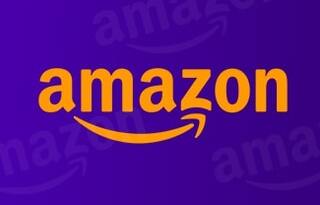Marketplace Boom: Why Is It Successful?
Today, there are more than 40 marketplaces in the world with a stocks comprising of more than $1 billion. But startups must not draw the inspiration only from the numbers some existing companies score.
If you do not already know what a "marketplace" is, just look at the screen of your smartphone. The Uber Taxi Service, the Airbnb apartment search platform, the Booking are just a few examples of products that have become the basis for companies with a similar marketplace business model.
Nowadays, a great number of marketplaces with a huge range of customization capabilities exist. Among the high-profile names are the Lyft taxi service (capital $5.5 billion), a German delivery service Delivery Hero ($2.9 billion), French search service Blablacar (capital - $1.6 billion).
Marketplaces have been a "tidbit" for venture investors for several years now. Instead of selling the Traveltriangle project hotels has decided to aggregate ready-made ideas for travel collecting offers from more than 10,000 agencies for users from 65 countries. In February 2016, Traveltriangle attracted $10 million from the Singapore venture fund RB Partners and other investors.
What spurs the "appetite" of investors for all the new marketplaces?
Investments attracted by large
marketplaces

Peerspace
Los Angeles Goat
Splacer.co
Accor
Blablacar
Delivery Hero
Lyft
Traveltriangle
First, let's define the terms. Unlike online stores that sell goods from a warehouse, marketplace services aggregate the offers of suppliers of goods or services on one site. Then, they provide convenient tools for searching, assist in conducting transactions, and regulate the interaction between the client and the supplier. The presence of third parties - suppliers - makes the model of the market more complex than the usual business models in e-commerce, but they are more flexible and easier to scale.
Focusing on one type of product or service allows startups in the field of marketplaces to work better in their niche and be more mobile than the competitors. The marketplace model is stable from the point of view of monetization prospects, and the "mathematics" of profit/loss per customer is very clear. Startups, due to their flexibility and unconventional look, manage to take their place even in highly competitive niches. The example of Traveltriangle in a highly competitive hotel reservation market proves that point really well.
Another example is the startup from Los Angeles - Goat. Over the past six months, it attracted about $30 million of venture investments, and the last round of $25 million was closed in February. The project team developed a mobile application that allows users to buy collection sneakers. The company claims that they carefully monitor the quality of goods and do not allow for the sale of a fake.
Narrow specialization - way to success

succeed niche for the future marketplace
A narrow specialization helps marketplaces not only make it easier to understand and attract the target audience but also creates a good ground for the future sale of the company to a large market player. An excellent illustration is the marketplace for searching and renting luxury villas - Accor, which Airbnb recently purchased for $300 million.
Marketplaces have more prospects in those niches where there are problems both with suppliers and with buyers. After all, removing the chain of intermediaries will really be in demand. For example, the wine marketplace Vinetrade, despite the volume of the market of more than $5 billion, could not meet the needs of either buyers or suppliers and was closed a year and a half after the launch.
One of the ideas of the marketplace is not just the satisfaction of demand, but also a reduction in advertising costs. Sometimes, even the opportunity to get rid of the need to maintain an advertising department at all and spend money on paid search traffic. In the case of Vinetrade, customers simply did not need an aggregator, since wine lovers were used to contacting suppliers directly.
Sometimes, to create a successful product, it is enough to look at the problem from a different angle. In 2012, the creators of metasearch, Aviasales, focused not on selling tickets, but on meta-searches, through which people could find the most beneficial offers. Now, the monthly attendance of Aviasales is about 8 million people.
In addition, marketplaces should not only unite suppliers and buyers but also provide additional value. It can be an innovative business model, a narrow focus, a technological advantage. The Hello Parking service faced the problem of loyalty of private parking lots owners who preferred to leave their areas unused rather than rent them at a low price.
Suppliers, as a rule, connect through direct contact, investments go to "sales", which will convince the company to work on a new site. For a startup on the early stages, the number of suppliers is secondary while the quality of interaction between suppliers and customers is more important.
How to preserve the achieved success and develop further




Is It A Marketplace?
After the startup turned into a marketplace and forced a narrow group of suppliers to play by the rules set by the platform, it's time to move on to the next stage. There is a risk to turn the nascent marketplace into an ordinary site with a huge catalog. At the same time, the value for the client goes away - without the technology of more convenient provision of services, the marketplace is losing popularity.
An example of sites for organizing events (take Partyinfo and Eventcatalog) is illustrative - they stagnate for years choosing an advertising model of monetization and refusing to withhold a commission when conducting a "transaction" (a typical model of monetization of the marketplace). But the services of renting sites for events, similar to Airbnb, are gaining increasing recognition among the audience.
Service Splacer.co attracted $7 million in 2016 and movedits team from Tel Aviv to New York. Peerspace ($5 million) is focused on corporate clients and combines models of marketplace and concierge services.
Why is it so difficult for marketplaces to continue working with an increasing vendor base? Because the site, including the supplier in the list of partners, takes on the risks related to the quality of the service. The balance between the number of service providers and the quality of their interaction with customers is one of the most difficult tasks for the creator of the marketplace. It can be necessary to disconnect more than half of the suppliers based on their poor work with clients. It may be scary at first. And then you’ll see that the monthly sales volume grew almost threefold. To attract the same customers, modern marketplaces need a serious investment in marketing. In order to make the cost of attracting the client less than the aggregate revenue, startups are looking for the ways to attract cheaper traffic. It is this ratio that affects the growth rate of the marketplace and increases its chances of obtaining venture investments.
Unlike entertainment applications (like the application with filters for MSQRD photos), which are viral by nature, marketplaces look for "lifehacks" for the viral distribution of the product. But to find effective models for the balance of unit economics is not easy.
For example, Homejoy - the American service for ordering cleaning services at a fixed price, attracted $40 million but could not cope with that. In 2014, Homejoy began selling discounts on the Groupon. This action gave a big increase in users, but almost none of them used the service for the second time. But the zero refund rate did not stop the creators of Homejoy - they continued to spend money on promotions. What was the result? Homejoy closed in 2015.
Here is a good example. Delivery Club - a service of food delivery from restaurants, was able to increase the percentage of repeated orders creating a loyalty system for customers.
Launching the marketplace, you know that you are taking a swim for a long distance. If social services can make a leap from product creation to the sale of the company in six months (this the path that was taken by the MSQRD mentioned above), then the founders of the aggregators are doomed to a long and painstaking alignment of the system.
At the same time, the potential for financial development of companies that automate complete niches is enormous. It absolutely depends on the capacity of the target market. Nevertheless, the creators of popular marketplaces do not always approach the calculation of such indicators with due diligence.
What's next?
Will venture investors continue to pour huge money into marketplaces fueling their marketing budgets? Uber's loss in 2016 amounted to $1.3 billion, while their capital increased to $68 billion. Apparently, the "boom" of light investment money in the venture market is over. Thus, young companies should not be inspired by the huge rounds attracted by existing marketplaces, and think more about their own business - about the balance between the speed of growth, the growth of financial flows, the cost of attracting the client, and the volume of investment rounds.










